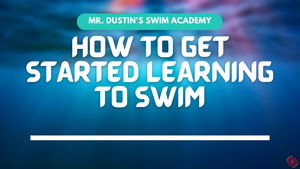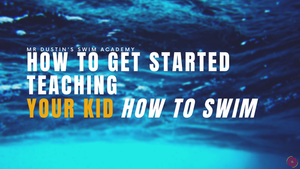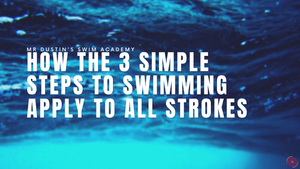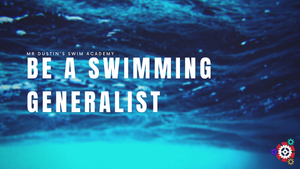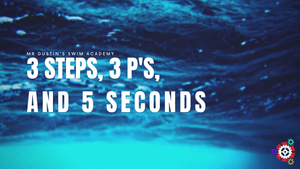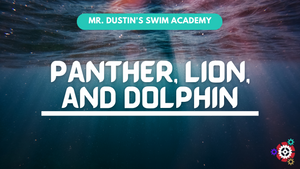After a decade of instruction, around a 1000 students, and teaching people of all ages. From the literal babies to the people in the later stages of life. I have spent a huge chunk of my life teaching, and I love it.
I honestly think to some degree or another I will be teaching for the rest of my life. However I realized that I am only one person, there are countless people I'll never reach, or get to train myself. This realization is just a matter of fact about life, there is only so much time, which is why content is so powerful. I write these blog posts every week, but they are just bits and pieces of a grander whole.
That whole is my book “How To Swim: The Philosophy and Hydrodynamics of Swimming”. This newsletter post today gives you excerpts and even the whole Introduction section for you to read. Giving you a taste of what is to come!
Why + Philosophy:
I've always felt philosophy was important in life, especially to me, and when I taught I noticed that philosophical inclination coming out.
It was contextual to the lesson at hand however, such as the idea of suffering. A multi-ethos idea, that suffering is only caused if you let it happen to yourself. A simple Stoic or Buddhist concept for example. When holding your breathe under water, the feeling of not being able to get air causes you to panic. It causes a suffering mindset because you THINK you are suffering. It is completely normal. However it isn't necessary, and if you train your thought processes differently. Then you get around it. That originates from the philosophical mindset.
No matter your background, mental states when swimming, physical abilities, or even some sort of handicap; We all have the capability for growth in some way, and I want to help you get there. For some reason I am obsessed with progress, especially with my students. When I teach a lesson, and the student makes marginal progress at best, then I feel bad as an instructor. Despite the fact that no matter what, you are at least going to get 1% better, and that is good enough.
How + Physics:
I mean this is literally why everyone is here, to learn a physical skill. What I don't think most people realize is just how much is involved with swimming. I usually tell people they only really need to know frontcrawl and breaststroke at first...
It is pretty simple to just keep going and learn the other strokes. Backstroke is super important for example too. Butterfly ends up being one of the best workouts too, so it is great to add as well.
The act of swimming is not a complicated one, in fact I came up with that 1, 2, 3, system for a reason. It really is as simple as that. However in practice it is hard to get your body to do what you want it to.
Hence why we practice, and spend so much time learning the movements.
Book's Introduction
I have three rules as an instructor: Listen to this book, Don’t Die, and Absolutely, Positively, NO DOGGY PADDLE! The reason why is that when I say these words (in that order mind you), in this case you read them, it conveys my methodology without you even realizing it. In order to understand something you need to listen, consume, and absorb knowledge or words. Understanding a concept is only inputting into your mind. If one way doesn’t work however, there is always another way. It is actually the reason why I wrote this book because many people are too scared to even get into the water. Second rule “Don’t Die”, now this is more for a humorous response because many people hear that and simply laugh. Very few actually take me seriously, which generally is the more logic based minds.
I really do care about my students, even you reading this book, as my student I really do not want you to die. Swimming is a life saving skill, and as you will read in this book has many connections to many other areas of life as well. Lastly the final rule is no doggy paddle, for those who are unaware of the reference it means to swim in a manner akin to a dog. Hands in front, knees bending, and head out of the water. Truly a method meant for four legs, but for some reason it is a common first occurrence for many people, however it can be highly detrimental to your health (as it curves the spine), and prevents you from actually learning to swim.
—
Hello, my name is Dustin, and I made this book for three reasons: To make it easier for anybody to know how to swim, to teach that even expert swimmers can be better, and to share the philosophy of swimming to the world. I have been teaching people of all ages how to swim for a decade, and there is one thing that every person faces: Being Uncomfortable. It could be as simple as putting their face underwater, to forcing their lungs to hold on when sprinting in a race.
There are many different indicators when it comes to swimming, many of how that person is going to act upon a certain situation. As well as many common habits people have when trying to do something new for the muscles. This book goes over many common occurrences or obstacles people engage when trying to learn, as well as many tips on how to go about overcoming them, and even unique techniques developed by me to teach swimming.
Overall this is going to be the best resource online you can find for years to come on learning how to swim. Yes there are some videos out there, but they lack the depth (no pun intended), and level of detail on how it all works. We will be going over some basic knowledge, philosophy, and over a few different strokes throughout the book.
I’ve been thoroughly going through the “How to Swim” content online, and nothing is as fluent in the ideas, skills, true form, and overall mindset as this book.
Please keep in mind that everyone is different, and their approach to learning is different. This goes for how I teach, even through the book, and how you will absorb the information. In this I must say that it may take multiple readings of the book to truly understand all the information provided!
Any person, of any age, and any background can learn to swim. It is a skill just as any other, and it is my hope that this book will alleviate any issues you may be having when trying to master swimming!
If you are able please try to experiment with the knowledge obtained in this book, that is going to be the best way to actually learn the skill.
Afterthought: During the writing of the conclusion of this book I was talking about how I hoped you put the information of the contents into practice. I realized I didn't ask you to do so in the start. What I expect from the readers is to read through the book, but do it in your own style. If you want to read each chapter, then practice, and repeat then great. If you want to read the whole thing, then practice, great too.
If you decide to do the latter where you read it all first then practice, then what I suggest is to reread it doing it the chapter by chapter styling. That will lead to the best comprehension by doing both. However the point is to put what you learn into practice, especially if you are starting from nothing. Good luck!
- Originally taken from the How to Swim book by Dustin Miller.
What + Psychology:
I'm surprised just how much neuroscience and psychology has come into my lessons. While I love to learn those subjects on my own, they come into play quite a bit actually. I had one middle aged woman tell me "my brain just can't", and she is a very strong, intelligent, woman who has the potential to be able to "CAN".
Yet her mindset was that of it being impossible. While you read earlier that I have 3 rules, that isn't necessarily the truth. I do often say "NO saying I CAN'T", as your mind has a habit of listening to that. Then believing it to be true.
No matter the age, no matter the experience level, and no matter the psychology I always start out with legs. If the legs aren’t straight, then you will sink as the knees bending causes your calves (for the most part) to push the water upward. This creates a downward motion in your legs causing you to sink. This does allowing for temporary flotation, but the speed of which your legs recess into a more neutral state causes you to push more upward then downward. If you are a dense person then you will sink anyways, see the later chapter about momentum (Which we will talk about in the Butterfly Chapter).
There is so much more to the psychology, than just avoiding the use of "I can't", but I can't get to it all here. All throughout the book there are bits on the psychology for you to learn from.
Conclusion
This book has taken me many years to get to where it is now, and I hope I can get it out very soon. I was planning to have it out this month, but alas time has escaped me. I follow this mindset of WHY, HOW, WHAT, very closely to my heart, and in the book I use them as communication avenues.
Depending on where you are coming from in learning this skill, one of those three (if not all 3), will be your anchor point to learn from. Then when you finish the book, you can reread it in a different mindset.
Disclaimer:
This is advice for people to level up their swimming, or perhaps get started in the first place. While you swim you should make sure you are doing so in a public facility with a lifeguard on duty for safety.



